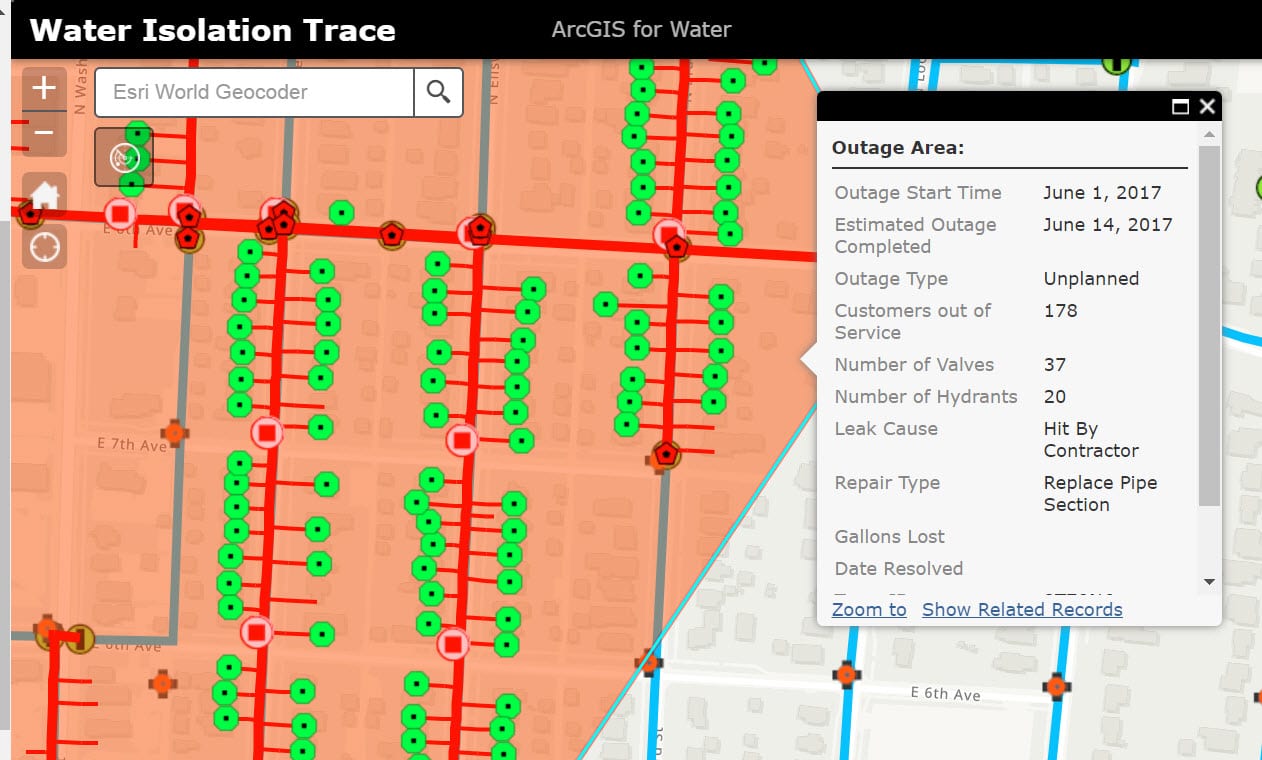Simplifying Your GIS – Make Your Data Work for You (Part 3)
In our last post, Simplifying your GIS – Sharing Data, we discussed web GIS and gave some examples of how to engage your manager or your public by sharing GIS data. Now you’ve done the hard part: standardizing and cleaning up your data, and deciding what technique you will use to share your data. In this post, we will show you some examples of how to go beyond just data sharing and use some of the Esri apps for real decision-making and everyday use.
Land Use Public Notification App
The Public Notification App makes life easier for those in your organization who need to generate mailing lists from parcel or assessor’s data. The app allows the user to search for an address or street name, create a buffer around a property or street section, and automatically create mailing labels or a csv with the names and addresses of all owners and occupants whose property intersects that buffer. It is ideal for non-GIS users who regularly need to notify residents of construction projects, zoning changes, or other land use notifications. The script and tools are customizable and configurable. For example, the “mature” app comes with only two built in mailing label formats. It is relatively easy to add other formats to suit your needs like we did for the City of Umatilla. It takes less than a minute to run this tool from start to finish!
Isolation Trace
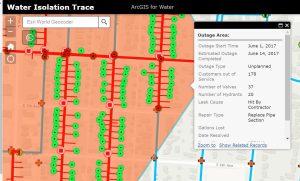
The Utility Isolation Trace app comes with ArcGIS for Water and is a powerful tool for your field crew. It allows someone in the field to specify the location of a main break or other event and determine which valves to close and what customers will be affected. You can configure it to allow the user to print a list of affected customers, and it can push results to a public Outage Viewer map to communicate information about the event such as the estimated outage time. Give it a try!
Operations Dashboard
The Operations Dashboard is a free app that is available with your ArcGIS Online login. It’s a powerful, configurable tool that can provide a real-time view of your spatial data for quick decision-making. It can give you a live view of your field workers, services, assets and events in maps, charts, graphs and other statistics. Here is a screenshot of a Dashboard we built for Comprehensive Life Resources that allows supervisors to get a quick glimpse of what is going on in the field. As the map is zoomed or panned, the statistics on the left adjust to show what is happening in that area. Configure your dashboard any way you want. The possibilities are endless.
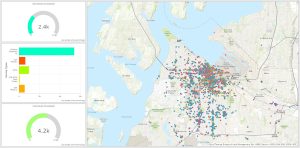
Map Change Request
Your utility and public works field crews are the ones most familiar with the real-world data. They’ll be the first to find errors in the GIS data once you put it in their hands. Do you have a good process to allow the field worker to point out these errors and communicate with the GIS staff instantly? The Map Change Request is a simple app that doesn’t require much effort to set up, but it is often overlooked. This app allows a user in the field describe the difference between the GIS data and the assets on the ground. This entry is separate from the utility data itself, so the field worker doesn’t have to modify the actual data. They just make the request and let the GIS staff take it from there. Take this a step further and set up a Python script that can notify your GIS staff when a request is entered, and you’ve gotten a big payoff for very little work. Get started on this one today!
Web AppBuilder Apps
Oh, where do we begin! ArcGIS Online’s Web AppBuilder gives you tons of control over how your application looks with zero programming. Do you want to have an app that makes it easy for your users to find and filter data? Use the Query and Filter widgets.
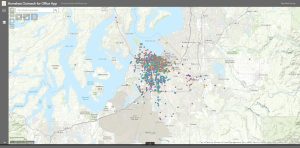
Want to see data change over time or only look at a certain time period? Set up the Time Slider widgetlike our mosquito software team did for their customer.
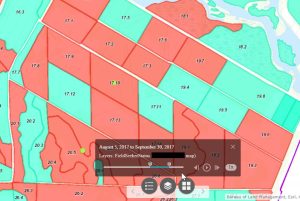
Charting, editing, analysis, parcel work, social media… the list of widgets grows every day. Just find the one you want, configure, add it to the app, and you’re off.
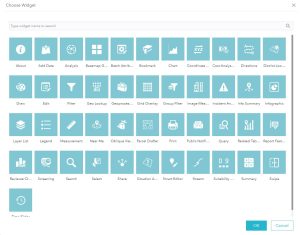
Want to see how others are using the Web AppBuilder? Check out the extensive gallery of examples.
Mobile
Don’t forget your mobile GIS! Most of the apps above can be configured to display on smart phones and tablets, putting the power of GIS into the hands of your field crews and remote workers. And with your ArcGIS Online subscription, you also have access to ArcGIS Explorer for quick viewing, Collector for ArcGIS for easy editing, and Survey123 for smarter forms for field data collection.
Want to learn more about Survey123 and integrations with Collector? Check out our upcoming classes in Portland and Denver. Or if you’d like to see training classes on other subjects mentioned here, take our training survey (created with Survey123 by the way!)
See something you like? We’re here to help, so get in touch.
Content contributors: Jacob Wittenberg, Karissa Giles, Chad Minteer, Esri
SaveSave





